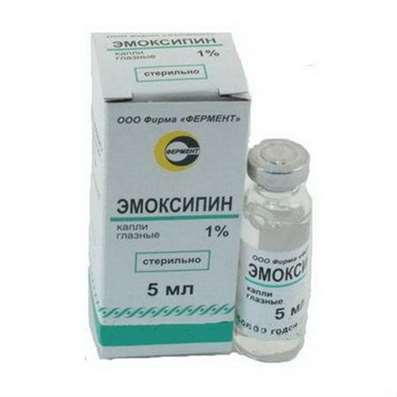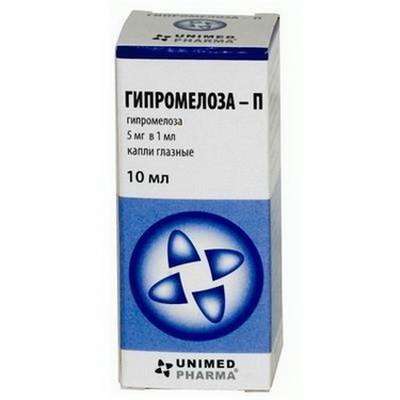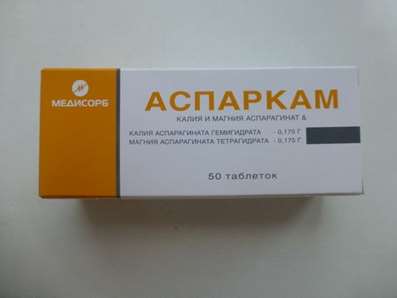Instruction for use: Granogen
I want this, give me price
Dosage form: Solution for intravenous and subcutaneous administration
Active substance: Filgrastimum
ATX
L03AA02 Filgrastim
Pharmacological group:
Stimulators of hemopoiesis
The nosological classification (ICD-10)
D70 Agranulocytosis: Agranulocytosis is hereditary; Aleicia; Aleykocytosis; Agranulocytic angina; Angina agranulocytic; Primary cytopenia
D71 Functional disorders of polymorphonuclear neutrophils
D72.8.0 * Leukopenia: Autoimmune neutropenia; Congenital neutropenia; Granulocytopenia; Idiopathic and drug-induced leukopenia; Idiopathic neutropenia; Leukopenia aplastic; Leukopenia radiation; Leukopenia with radiation therapy; Radiation leukopenia; Hereditary neutropenia; Neutropenia in patients with AIDS; Periodic neutropenia; Radiation leukopenia; Persistent neutropenia; Febrile neutropenia; Two-stage cytopenia; Radiation cytopenia; Neutropenia is cyclic
Z51.1 Chemotherapy for neoplasm: Cystitis hemorrhagic, caused by cytostatics; Urotoxicity of cytostatics
Z52.3 Bone marrow donor
Composition and release form
Solution for intravenous and subcutaneous administration 1 ml
Filgrastim 30 million units (300 μg)
Auxiliary substances: acetic acid; Sodium hydroxide; sorbitol; Polysorbate 80; water for injections
In vials of 1 or 1.6 ml (30 million units (300 μg) / ml); In a pack of cardboard 1 bottle or in a planar cell pack 5 bottles; In a pack of cardboard 1 package.
Description of dosage form
Transparent colorless liquid.
Characteristic
Filgrastim is a highly purified, non-glycosylated protein, consisting of 175 amino acids. It is produced by the strain Escherichia coli, the genome of which was introduced into the genome by genetic engineering methods of granulocyte human colony-stimulating factor.
Pharmachologic effect
Mode of action - Leukopoietic.
Pharmacodynamics
Granogen® stimulates the proliferation of colony-forming precursor cells of the neutrophilic bone marrow germline, accelerates their differentiation and the release of mature neutrophils from the bone marrow to the peripheral blood, enhances effector functions of neutrophils such as chemotaxis, phagocytosis and oxidative metabolism. Granogen ® causes a rapid, specific and dose-dependent increase in the number of neutrophils and, at high concentrations, a moderate increase in the number of monocytes and macrophages. The increase in the number of neutrophils in the peripheral blood is explained by the shortening of the maturation time from 5 to 1 day, the increase in the number of cell divisions and the accelerated release of cells into the peripheral blood. Granogen® reduces the frequency, severity, and duration of neutropenia and febrile neutropenia observed in patients receiving cytostatic therapy. The use of Granogen ® in such patients reduces the need for antibiotic therapy and reduces the length of hospital stay.
The use of Granogen® both after chemotherapy and independently of it leads to the activation and release of hematopoietic progenitor cells into the peripheral blood. These cells can be collected by leukapheresis and administered to the patient after treatment with large doses of cytotoxic drugs instead of bone marrow transplantation or in addition to it. The introduction of hematopoietic progenitor cells allows accelerating the recovery of hematopoiesis, reduces the frequency and severity of hemorrhagic and infectious complications.
The efficacy and safety of filgrastim in adults and children receiving cytotoxic therapy is the same.
In children and adults with severe chronic neutropenia, filgrastim stably increases the number of neutrophils in peripheral blood, which reduces the frequency of infectious complications.
The appointment of filgrastim to patients with HIV infection allows maintaining a normal level of neutrophils on the background of the use of antiretroviral or myelosuppressive therapy. Signs of increased replication of HIV in the application was not noted.
Pharmacokinetics
Both with SC and with IV introduction, a linear relationship is observed between the concentration of filgrastim in the blood serum and the administered dose. After the administration of the recommended dosages of filgrastim, its concentration in the blood serum exceeds 10 ng / ml for 8-16 hours. The volume of distribution in the blood is 150 ml / kg. Cl is 0.5-0.7 ml / min / kg. T1 / 2 filgrastim - about 3.5 h. Filgrastim biotransformed to peptides. With prolonged use (up to 28 days), no cumulation phenomena are observed.
Indication of the drug Granogen
Treatment of neutropenia and febrile neutropenia in adult patients receiving myelosuppressive therapy (with the exception of chronic myelogenous leukemia and myelodysplastic syndrome);
Reduction in the duration of neutropenia and its clinical consequences in adult patients receiving myeloablative therapy followed by bone marrow transplantation;
Mobilization of hematopoietic progenitor cells into peripheral blood, incl. After myelosuppressive or myeloablative therapy, for the purpose of their separation and subsequent autologous transplantation in adult patients;
Treatment of severe periodic or idiopathic neutropenia (neutrophil count not more than 0.5 · 109 / L) to restore neutrophil levels, reduce the frequency and duration of infectious complications in adult patients;
Treatment with persistent neutropenia (absolute number of neutrophils less than or equal to 1 · 109 / L) in adult patients with developed stage of HIV infection to reduce the risk of bacterial infections;
Mobilization of hematopoietic progenitor cells in peripheral blood in adult healthy donors for the purpose of their subsequent separation and allogeneic transplantation.
Use strictly according to the doctor's prescription.
Contraindications
Increased sensitivity to filgrastimu or other components of the drug;
Severe congenital neutropenia (Kostmann's syndrome).
Application of pregnancy and breastfeeding
Due to the fact that the safety of filgrastim in pregnant women is not established, its use during pregnancy is not recommended. For the time filgrastim should stop breastfeeding.
Side effects
General: headache, fatigue, weakness, anorexia.
On the part of the musculoskeletal system: often - mild or moderate (7%), sometimes severe (3%) osalgia and myalgia (in most cases, are stopped by NSAID), arthralgia, exacerbation of rheumatoid arthritis, exacerbation of arthritis caused by gout, with prolonged therapy Osteoporosis.
On the part of the digestive system: nausea, vomiting, diarrhea, constipation, hepatomegaly.
From the side of the cardiovascular system: very rarely - transient decrease in blood pressure (not requiring medical correction), veno-occlusive disease (connection with filgrastim is not established), cutaneous vasculitis (with prolonged therapy in 2% of patients with severe chronic neutropenia), arrhythmia, tachycardia (Communication with the drug is not established).
On the part of the respiratory system: cough, interstitial pneumonia (no connection with the drug has been established) in patients with a potentially unfavorable prognosis (after chemotherapy, especially bleomycin-containing regimens), pulmonary infiltrates, adult respiratory distress syndrome, respiratory failure, dyspnea.
From the skin: alopecia, skin rash.
On the part of the organs of hematopoiesis and the system of hemostasis: splenomegaly, pain in the upper left quadrant of the abdomen; Rarely - thrombosis of blood vessels; Very rarely - rupture of the spleen, thrombocytopenia, anemia, epistaxis (with long-term administration), myelodysplastic syndrome and leukemia - the association with the drug is not established.
From the genitourinary system: rarely - slightly expressed and moderate dysuria.
Allergic reactions: rarely - skin rash, urticaria, angioedema.
Laboratory indicators: dose-dependent, reversible weak or moderate increase in lactate dehydrogenase, alkaline phosphatase, hyperuricemia, transient hypoglycemia after eating; Very rarely - proteinuria, hematuria.
Interaction
In view of the sensitivity of actively proliferating myeloid cells to myelosuppressive cytotoxic chemotherapy in the appointment of filgrastim, an interval of 24 hours before or after the application of myelosuppressive drugs should be observed.
Granogen ® is pharmaceutically incompatible with 0.9% sodium chloride solution.
When filgrastim is used to mobilize hematopoietic stem cells, it should be noted that prolonged use of such cytostatic drugs as melphalan, carmustine and carboplatin may reduce the effectiveness of mobilization.
Dosing and Administration
IV, SC.
General recommendations
Granogen® is injected daily with SC without dilution or in the form of short (within 30 min) IV infusion in a 5% dextrose solution. The treatment is carried out until the number of neutrophils passes the expected minimum (nadir) and returns to the normal range. The choice of route of administration depends on the specific clinical situation. Preferably after the route of administration.
The first dose of Granogen should be administered no earlier than 24 hours after the last administration of cytotoxic drugs.
Information on breeding
Granogen® cannot be diluted with 0.9% sodium chloride solution.
If necessary, Granogen® can be diluted with a 5% solution of dextrose. If Granogen® is diluted to a concentration of <1.5 million units (15 μg) / ml, human serum albumin should be added to the solution so that the final albumin concentration is 2 mg / ml (eg, with a final solution volume of 20 ml, total dose of the drug <30 million units (300 μg) should be administered with the addition of 0.2 ml of 20% human albumin solution). Do not dilute the drug to a final concentration of <0.2 million units (2 μg) in 1 ml.
The drug in the opened bottle is not subject to further storage.
Standard schemes:
For the treatment of neutropenia after a course of cytotoxic therapy, Granogen® is administered once a day by sc or iv at a dose of 0.5 million units (5 μg) / kg. An increase in the number of neutrophils is usually observed 1-2 days after the start of treatment. To achieve a stable therapeutic effect, it is necessary to continue therapy until the number of neutrophils passes through the expected minimum (nadir) and reaches the normal values. It is not recommended to cancel the drug prematurely, until the number of neutrophils passes through the expected minimum. Treatment is discontinued if the absolute number of neutrophils after nadir has reached 1 · 109 / l. After the chemotherapy for coarse tumors, the estimated duration of treatment can be up to 14 days. After induction and consolidation therapy of acute myeloid leukemia, the duration of filgrastim administration may be longer, depending on the type, doses and the used scheme of cytotoxic chemotherapy.
After mieloablative therapy followed by bone marrow transplantation, Granogen® is administered at an initial dose of 1 million units (10 μg) / kg / day of penicillin or in / drip. The first dose of Granogen® should be administered no earlier than 24 hours after cytotoxic chemotherapy, and for bone marrow transplantation - no later than 24 hours after bone marrow infusion.
After the maximum reduction in the number of neutrophils, the daily dose is adjusted depending on the dynamics of the increase in the number of neutrophils. If the absolute number of neutrophils exceeds 1 · 109 / L for 3 consecutive days, the dose is reduced to 0.5 million units (5 μg) / kg / day; Then, if the absolute number of neutrophils exceeds 1 · 109 / L for the next 3 consecutive days, the drug is canceled. If during the treatment period the absolute number of neutrophils is <1 · 109 / l, the dose is again increased in accordance with the above scheme.
For the mobilization of peripheral blood stem cells (BSKK), conducted without chemotherapy, Granogen® is used at a dose of 1 million units (10 μg) / kg / day for 6 days by continuous 24-hour IV infusion or by injection 1 time per day. It is recommended to perform 3 leukapheresis in a row - on the 5th, 6th and 7th days.
For the mobilization of PSKK, conducted after myelosupressive therapy, Granogen® is prescribed in a dose of 0.5 million units (5 μg) / kg / day, starting from the 1st day after completion of the chemotherapy until the number of neutrophils passes through the expected minimum And will reach normal values. Leukapheresis should be performed during the period when the absolute number of neutrophils is in the range from 0.5 · 109 / L to 5 · 109 / L.
To mobilize PSKK in healthy donors for subsequent allogeneic transplantation, Granogen® is prescribed at a dose of 1 million units (10 μg) / kg / day for 4 to 5 days. Leukapheresis is performed on the 5th and, if necessary, on the 6th day, to obtain a cellular graft containing at least 2 × 10 6 CD34 + cells / kg body weight of the recipient.
In severe chronic neutropenia, Granogen® is prescribed in a dose of 0.5 million units (5 μg) / kg / day for several days until a stable increase in the number of neutrophils is> 1.5 · 109 / L. After reaching the therapeutic effect, the minimum effective dose is determined to maintain this level of neutrophils. This requires a long daily administration. After 1-2 weeks of treatment, the initial dose can be doubled or reduced by 50%, depending on the patient's response to therapy. Subsequently, every 1-2 weeks, an individual dose adjustment should be performed to maintain the number of neutrophils in the range 1.5-10 · 109 / L.
For neutropenia associated with HIV infection: the initial dose of Granogen® is 0.1-0.5 million units / kg (1-5 μg / kg) / day once a day before the normalization of the number of neutrophils. The normalization of the number of neutrophils usually comes in 2 days. After reaching the therapeutic effect, the usual maintenance dose is 300 mcg once a day 2-3 times a week according to the alternating schedule (every other day). Subsequently, individual dose adjustment and long-term administration of the drug may be required to maintain the average number of neutrophils> 2 · 109 / L.
Special instructions for dosing
Recommendations for filgrastim dosage for children of children receiving cytotoxic chemotherapy are the same as for adults, due to the fact that the kinetic parameters and safety profile of filgrastim in adults and children are the same.
Correction of filgrastim dose is not required in patients with severe renal or hepatic insufficiency, since their pharmacokinetic and pharmacodynamic indices are similar to those of healthy volunteers.
Overdose
Filgrastim overdose cases are not registered.
Precautionary measures
Given the mechanism of pharmacological (immunological) action filgrastima, its impact on the ability to drive vehicles and work with mechanisms seems extremely unlikely.
Special instructions
Treatment with Granogen® should only be carried out under the supervision of an oncologist or hematologist. Procedures for mobilization and leukapheresis should be carried out in specialized centers. Do not prescribe Granogen ® to increase the doses of cytotoxic chemotherapeutic drugs above recommended.
Particular attention should be paid to differential diagnosis between severe chronic neutropenia and other hematological diseases, such as aplastic anemia, myelodysplastic syndrome and myeloid leukemia.
With special care, filgrastim should be used in acute myelogenous leukemia.
The safety and efficacy of filgrastim in patients with chronic myelogenous leukemia and myelodysplastic syndrome has not been established. Due to the fact that myeloid tumor cells can carry a receptor for GCSF, filgrastim is not used in patients with myeloid germ cell damage. Particular attention should be paid to a differential diagnosis between the blast crisis of chronic myelogenous leukemia and acute myeloid leukemia.
Therapy with Granogen® does not prevent the development of thrombocytopenia and anemia caused by myelosuppressive chemotherapy. Because of the possibility of using higher doses of chemotherapy (eg, full doses according to the regimens), the patient may be at a greater risk of developing thrombocytopenia and anemia. It is recommended to regularly determine the number of platelets and hematocrit.
It is necessary to take into account the possible risk of developing hyperleukocytosis during the treatment with filgrastim. During the treatment with filgrastim it is recommended to regularly determine the number of leukocytes. With an increase in the number of white blood cells> 50 · 109 / l, Granogen® should be immediately withdrawn. The enlargement of the spleen in patients with severe chronic neutropenia is a direct consequence of filgrastim. The size of the spleen in patients taking Granogen® should be monitored regularly.
Storage conditions of the drug Granogen
In the dark place at a temperature of 2-8 ° C (do not freeze).
Keep out of the reach of children.
Shelf life of the drug Granogen
2 years.
Do not use after the expiry date printed on the package.

 Cart
Cart





